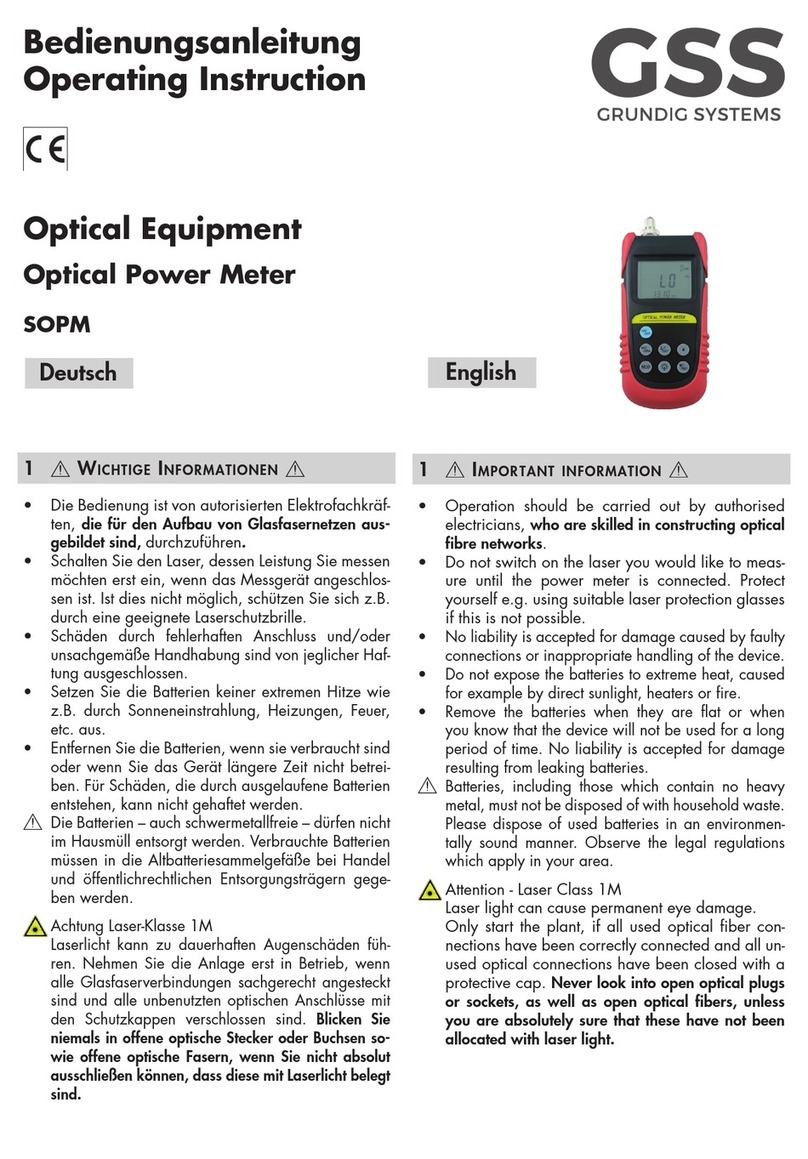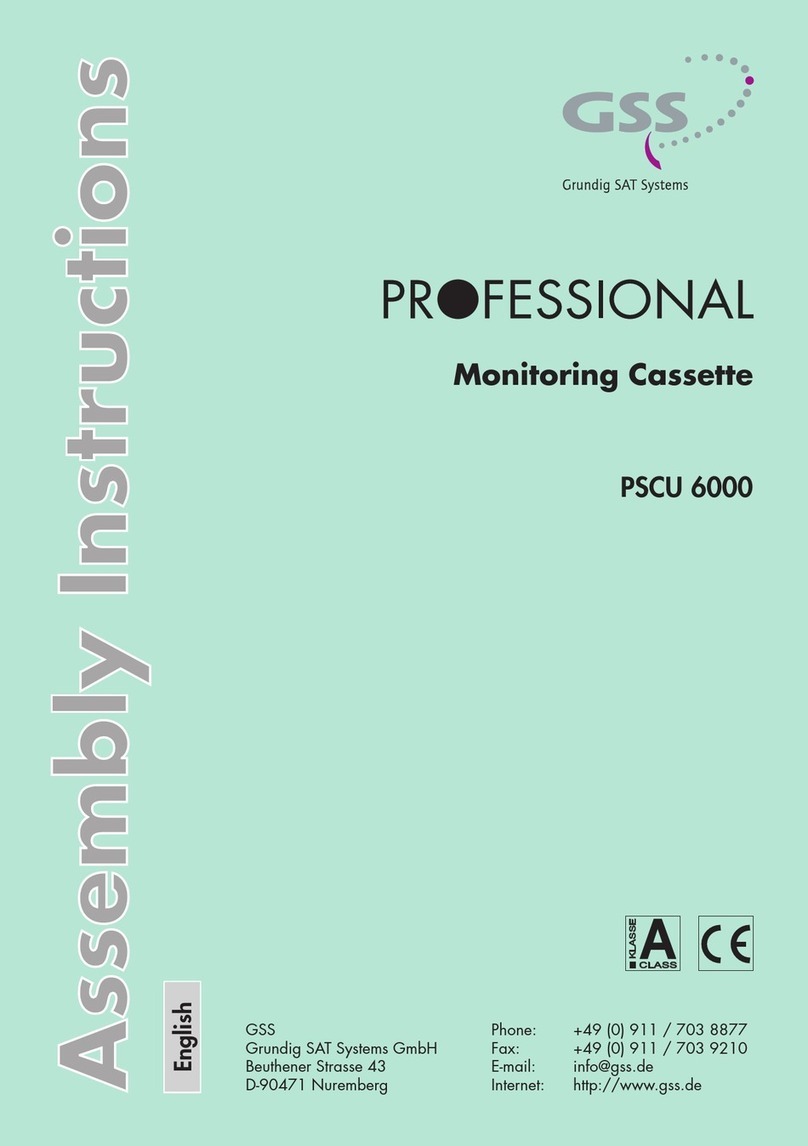
- 4 - STC 816 R
1 notes about safety and hazards
• The head-end station is subject to the regulations of protection class I.
• Never operate the device without a protective earth connection, earth con-
nection to the device and potential equalisation!
• Observe the relevant VDE regulations.
• If the power cord needs to be replaced, only use an OEM power cord (EMC).
• The standards EN/DIN EN 50083 resp. IEC/EN/DIN EN 60728 must be
observed, especially concerning equipotential bonding and earthing
.
• Observe the relevant standards, regulations and guidelines on the installa-
tion and operation of antenna systems.
• Before starting installation or service work disconnect the receiving system
from mains. For a complete disconnection from the mains, the mains plug
must be pulled out of the mains socket. Ensure that the mains plug can be
pulled out without difficulties.
• Do not perform installation and service work during thunderstorms.
• Assembly, installation and servicing must be carried out by an authorised
electrician.
• The head-end station should only be installed in a room where the permissi-
ble ambient temperature range (0 °C and +50 °C ) can be maintained, even
during fluctuations in climatic conditions.
• Make sure there is a minimum space
- at wall mounting 50 cm above and below
-
at mounting in a 19" cabinet 20 cm above and below, as well as 10 cm
behind.
• To avoid too strong heating of the head-end stations it is not admissible
to mount them one upon the other without using thermic precautions (e.g.
permanently air recirculation, ventilation, heat deflectors etc.).
•
If additional fans are to be used to circulate the air, ensure that the system will
be shut down (disconnected from mains) should any one of the fans fail.
• Install the head-end station
- in a dry, dust-free environment
- in such a manner that it is protected from moisture, fumes, splashing wa-
ter and dampness
- where it is protected from direct exposure to sunlight
- on a vibration-free wall or floor construction
- not within the immediate vicinity of heat sources
• In case of the formation of condensation wait until the system is completely
dried.
• Ensure that the head-end station is adequately ventilated.






























